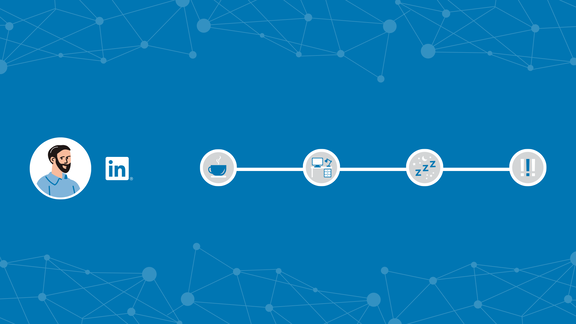
It's 7.30 a.m.
My first coffee is ready, and I pull out my smartphone to check the latest posts on LinkedIn. One post immediately catches my eye, in which someone comes up with the groundbreaking idea of using ChatGPT in the context of BIM. I chuckle and wonder where the Metaverse and Blockchain could possibly help with that? But well, maybe I do find some inspiration in it after all. I take the bait and dive into it. A few minutes later I realize: Although the post may be about ChatGPT, it doesn't have much to do with BIM. The author asksthe language model how to select elements in Revit if only their IDs are known. ChatGPT spits out a reply that factually agrees with the help section. Euphoria going through the roof. Just imagine what will be possible in the future if everything develops exponentially? A requirement plan goes in, and the building design technically optimized for use, efficiency, cost and sustainability pops out. Great idea - now someone will just have to work out the details. For example, where does the training data set come from when in reality, information is either not available comprehensively, fluctuates greatly, or cannot be derived from publicly accessible sources without inconsistencies? But well, let's ignore all that. After all, there's magic to every new beginning. The reality is: we struggle with litigations, backlogs, delivery problems and specialist shortages. Even small steps toward more automation would help. I'm on my way to work when another thought strikes me: Let's assume a machine really does plan better than humans at some point. What about acceptance? There are much simpler things that machines can do statistically well enough these days, but still face difficulties in practice. Autonomous driving, for example, is far from being mainstream, despite good success rates. As I'm merging onto the highway, driving a car doesn't strike me as being as difficult as the holistic planning of a building. So, an autonomous passenger car is not allowed to participate in traffic without restrictions in our country, but a computer will soon be planning fire protection for us? Rather unlikely. I park the car and briefly scroll through the comments. ChatGPT is supposed to explain how to open a Revit file created in a previous version. The answer sounds so convincing that I seriously wonder if I've missed something crucial all these years. Upon further reflection, its solution is simply wrong. After all, how would the machine know that this is impossible if all you've done is train it to give plausible-sounding answers? Does ChatGPT even have a Revit license? Maybe we have to be prepared to still work with anthropoid intelligence (ironically also abbreviable as AI) and our own experience for the coming years.
Lunch break 12:30 p.m.
Reaching for my cell phone, which by now has been burned into my muscle memory, eventually leads me back to the app. Someone writes we could all forget about BIM - "noBIM" is the future. The article is flanked by a completely overloaded diagram which makes even the red-threaded mind maps in secret agent movies look pale. It shows dependencies between software environments and concludes that all we need to do is to liberate the data from models to perform computations on it with powerful data processing pipelines. As I see it, this "noBIM" has a massive branding problem. Why should the structured handling of various data from building models not be BIM? Oh well, someone may have confused BIM with authoring platforms here. This can happen! So, I take a closer look at what is written. The bottom line, according to the author, is that data is the salt and pepper of the project, and we should forget about the cumbersome tools that hold us back from mining this treasure. How can anyone argue with that? He suggests that all that's needed is a simple export tool for this liberation and then either spreadsheets or custom scripts can be used. Doesn't sound new to me, but it certainly doesn't sound like it could simplify anything. People who are already overwhelmed with digital transformation are now supposed to learn programming? The legroom is limited, so start your own airline? Who - except maybe Elon Musk - would seriously go through with that? But all right, let's assume ChatGPT will eventually help lay people convert their use cases into code. The problem remains that data must be compiled in a structured way to be processable in a similarly structured way. In the land of free-text fetishists and paper archives even in 2023, there is still a long way to go. If we are being honest, there are still some gaps in integrated planning in today's software landscape that can be temporarily bridged with custom scripts. But the consequence should not be to embark on a long-term journey into the Middle Ages of usability. Instead, everyone involved should develop a better sense of what machines can and cannot do and should avoid wasting data input in form of free text and handwritten information. It may well be that a machine can even interpret most of the data garbage nowadays, but to what cost in terms of computing and energy? How about sustainability?
It's almost 11:00 p.m.
Time to go to bed. Why do I reach for my smartphone again instead of just going to sleep? I don't know. A whitepaper from a software manufacturer on the subject of "sustainability" drops into my timeline. Good, I have enough fake e-mail accounts to enter an e-mail address as requested and dive into it before going to bed. What I get in exchange for those contact details is an article that could have just as easily been written by ChatGPT. Hardly anything concrete, mainly Wikipedia knowledge and some claims, peppered with pretty stock graphics. One supposedly big innovation is the announcement that in the future, manufacturers will be allowed to tie sustainability product declarations to digital components. I ask myself if anyone has ever seriously forbidden manufacturers to do this before. The lack of availability of this data is pretty much the only challenge in integrating sustainability aspects into BIM planning. Everything else is relatively well understood. If necessary, one can even bridge the gap with the above-mentioned scripted workflows, provided that the mainstream software does not yet offer a simpler solution here. In any case, the whitepaper doesn't teach me anything in terms of content, so I delete the document, switch off the light and turn around.
At the end of the day, I come to an uncomfortable conclusion:
The future remains exciting. But an AI or other future technologies won't be able to fix it single-handedly; we also must change, software manufacturers and planners alike. Visions are good, but half-baked claims don't help. Beyond just collecting "likes" or "subscriptions", it takes a lot more than combining two hypes along the lines of BIM + X and letting others work out the "details". ChatGPT and related technologies have a serious quality problem in terms of hard facts, and in the end, language models don't put the pieces together correctly at all. Instead of hoping for miracle tech, let's work together to make the planning world a little better every day.
In this spirit: Go ahead and share your own experiences. Point out where there is a need and ask for integrated solutions. A perfect place for this is our Idea Channel.



